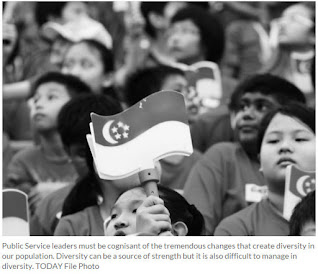Three new stations to close loop for Circle Line
Rail extension will offer direct routes to city, Marina Bay area when it is completed in 2025
By Adrian Lim, The Straits Times, 30 Oct 2015
The Circle Line (CCL) will finally be true to its name in 2025, when a 4km rail stretch with three new stations - Keppel, Cantonment and Prince Edward - is completed.
This sixth stage of the CCL will link existing terminal stations HarbourFront and Marina Bay, offering commuters direct routes to the city and Marina Bay area.
For example, a trip from Telok Blangah to Marina Bay now requires two transfers - from the CCL to the North East Line, and then the North-South Line. With the completion of the extension, a commuter can reach his destination in a single train ride, cutting travelling time by a third, or about 10 minutes.
The additional stations will also expand the rail network to areas such as Prince Edward, Everton Park and the southern edge of the city.
Senior Minister of State for Transport Ng Chee Meng, who unveiled the new stations during a visit to the Tuas West Extension, said yesterday: "(The) CCL6 will support direct east-west travel, enhancing overall connectivity between areas such as Paya Lebar and Mountbatten, and areas such as Pasir Panjang, Kent Ridge and Harbour-Front."
He added that the extension will enhance the CCL's role as an orbital line allowing commuters to transfer between MRT lines without entering the city centre.
This extension will cost $3.7 billion and construction is expected to start in the middle of 2017. More than 400,000 commuters use the line daily and the Land Transport Authority (LTA) expects ridership to grow further, though it did not provide a projection.
The extension will also support future developments, such as the Greater Southern Waterfront proj-ect, a 1,000ha slice of coastal land that will be freed up by the relocation of ports from Pasir Panjang and Tanjong Pagar to Tuas by 2027.










